Native Planting

Today the forecast searing sun hid behind clouds all morning, making it a perfect Fall day for planting natives. The area all along the northern property fenceline is dedicated to plants found in our San Diego coastal sage scrub habitat. The dirt along this area is bad. It is sandy dirt over hard clay, a product of years of runoff flowing in from the neighbor’s yard.

Last year coastal live oaks, cork oak and Engelmann oak were planted along this strip, and little else. The soil was covered with sheaths of palm leaves, and they helped protect the soil and hold in some moisture, but there is little decomposition rate from them. The soil needed oak leaves.
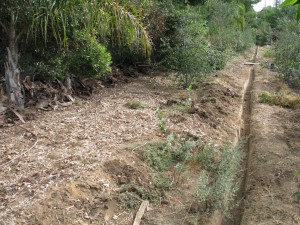
Last Monday Lori, a friend who is working here weekly did a tremendous job carefully raking back all the palm sheaths, then bagging oak leaves from the walkways around the massive old oak on the embankment and spreading them around between the new oaks. There are plenty of leaves left for the health of the big oak; just the leaves on the slippery stairs were moved. The oak leaves will decompose and provide the soil with the nutrients to host fungal action in the ground; the start of soil building.

Today Jacob and I planted a number of lemonade berry, sugarbush and deerweed, as well as two replacement coastal live oaks. I had purchased packets of seed mixes as well as several types of lupine (nitrogen fixer), making sure there was no alyssum, evening primrose or borage in the packets (they do very well on their own on the property!).
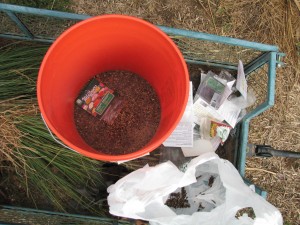
I also took some seedheads from a couple of non-native sunflowers and threw them into the mix.
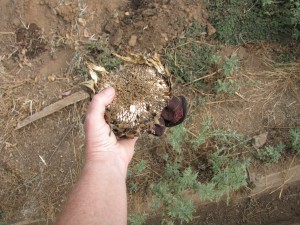
In every damp spot from the subterranean irrigation we planted wildflower seeds.
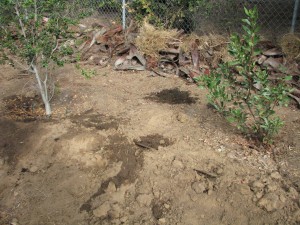
We’ve had stunning results from this method for several seasons. It is the middle of October and there are still flowers blooming, providing beauty and food for insects and birds.
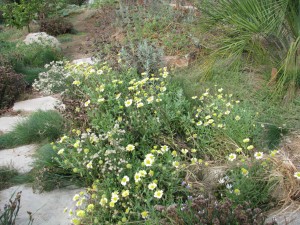
Some herbs such as purple basil and parsley have come up late.

California poppies that have died off are showing new leaf growth around the base of the plants. So all-in-all a very successful day, thanks to the hard work of my helpers and the cooperation of the weather. These native plant guilds of plants, mulch and flowers will all work towards turning that soil alive and begin the communication between the native plants that will make this habitat for native animals priceless.